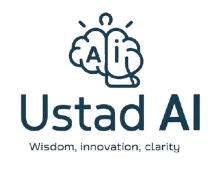Hugging Face + Groq: Front-End real-time AI just got interesting
The AI arms race has continued to be defined by who can build the biggest models. There’s a quiet revolution happening, though, and it’s less about accessing large datasets to build state-of-the-art models and more about real-time inference for common AI tasks.
In a major step forward, that will likely transform how language models work in the “real world,” Hugging Face—the world’s most powerful open-source AI model hub—has now incorporated Groq as an inference provider. The result is a tremendous performance upgrade with Groq-based inference, powered by Groq’s custom-designed silicon for AI language workloads.
This partnership is much more than a few seconds faster inference response time. It is about enabling new use cases (e.g., conversational agents), reducing costs and performance gaps, and building AI that is not only intelligent but also instant.
⚙️ So What’s Different About Groq? It’s Not a GPU. It’s A Language Processing Unit (LPU).
While other AI systems utilize GPUs intended to address gaming and graphics rendering, Groq chose a different path. Groq designed its chip architecture from the ground up – a Language Processing Unit focused on language tasks.
Most processors – even GPUs – struggle with the sequential nature of language. You have to process words in order; the significance of each word matters, and the latency costs go up on each inefficiency. In light of these challenges, Groq’s LPU architecture provides:
– Deterministic execution: LPUs provide uniform performance, predictable latency, and unlike a GPU. When you are doing real-time work with chatbots, finance, or robotics, this is gold.
– Massive Parallelism: It processes whole sequences in potentially a lot less time.
– Throughput. The LPU does not get blocked at bandwidth or burdened with scheduling. It processes thousands of inferences simultaneously and is perfect for large enterprise workloads.
🧠 “Groq is not in the business of building bigger brains – we’re about making the brains we have faster, thinner, and smarter in real environments.”
🤖 Which Models are Supported?
Hugging Face users now have access to an expansive offering of high-performance models, powered by Groq infrastructure:
- LLaMA 3 & LLaMA 4 (Meta): Foundation models that achieve state-of-the-art multilingual functionality.
- Qwen’s QWQ-32B: A new Chinese-English bilingual model built by Alibaba’s AI department.
- Mistral & Mixtral: Lightweight open-access models built for thin-client and production
- Gemma, Falcon, and more: Groq is continuously expanding model support of widely-used open-source architectures.
These models will work great for summarization, question answering, conversational agents, document/parse, coding assistant, and translation, which are areas where speed of inference matters for user productivity and experience.
🔧 Smooth Implementation: No Code Modifications
Whether you are an independent developer or extending a technology stack to an enterprise:
- Leveraging Hugging Face’s Python or JavaScript clients, simply define the provider “groq” in your inference calls.
- Add your own Groq API key for direct access and payment, or
- Use Hugging Face’s managed billing if you want everything billed to your account.
Minimal configuration, maximum capability.
💡 There are many scenarios where a user doesn’t deeply understand the AI infrastructure but can credibly operate using Groq’s speed because they just made some very minor changes to their code.
💰 Pricing, Billing Options, and Access Levels
Perhaps the biggest considerations for scaling AI are not just speed but cost. Hugging Face designed the Groq integration for a variety of different cost options:
- Free Tier: Developers can use Groq-based inference in a limited quota, and not pay a dime.
- PRO Tier: Developers will have a greater quota and availability.
- Enterprise: Very high throughput options and availability for large-scale deployment.
Billing is transparent: if you provide your own Groq key, you receive Groq’s direct pricing. If you use Hugging Face billing, the standard pass-through rate will apply. And yes–there is no markup (yet).
📈 Industry Impact: This is not just a speed increase—it’s a change in strategy
The impact of AI on developers is becoming harder to ignore today:
- The models are becoming larger and more complex
- GPUs are becoming more expensive, hard to source, and consume too much energy
- Inference latency impacts the user experience and effectiveness in dealing with drop-offs in customer support, finance, education, healthcare, and real-time analytics.
Groq’s overall chip design philosophy of speed over scale flips this story on its head, and now, with the collaboration with Hugging Face’s Model library, tens of thousands of developers have access to it.
🏥 In telehealth, a 3-second delay can mean losing a patient’s trust in a chatbot.
🛒 In e-commerce, faster AI means better product recommendations and conversions.
💬 In enterprise SaaS, responsive HCI matters to loyalty.
🌐 AI Infrastructure Is the New Battlefield
Though Groq still feels relatively insignificant next to GPU heavyweights like Nvidia, this partnership marks a turning point. The age of “just run it on a GPU” is coming to an end. More specialized, domain-optimal compute is coming on strong.
Hugging Face already supports an array of inference backends such as:
- AWS Inferentia / Trainium
- Microsoft Azure
- Google Cloud TPUs
- Nvidia Triton
- Now: Groq LPUs
This multitude of platforms is a great boon to developers and enterprises desiring vendor optionality and cost control, and it’s a catalyst for change for GPU vendors.
🔮 What’s Next?
-
Custom Model Optimization for Groq
We can expect a time when Hugging Face enables users to fine-tune models in close relation to Groq’s unique architecture, theoretically yielding much higher speeds.
-
Edge Device Compatibility
Groq is working on smaller, more power-efficient LPUs. Imagining AI assistants, like optimum engine inference in smart glasses, cars, and appliances, potentially running LLaMA 4 in real time.
-
Tooling Ecosystem Expansion
As we see developers shift to Groq, we will see lots of SDKs, plugins, and performance dashboards dedicated to high-speed inference mushroom.
🧭 Final Thought: It’s Not About Speed, It’s About Possibility
This is more than a technology advance. It’s a complete rethinking of what AI can accomplish in the real world.
- Faster responses = AI that will feel natural.
- Lower latency = wider adoption.
- Cheaper inference = AI that scales with your vision and ambition, not just your budget.
For Hugging Face, it’s an exciting new chapter-not just as a model library but as a real performance platform for production-quality AI.
If you’ve been waiting for AI to “be practical,” then you can stop waiting.
Because with Groq driving the hardware and the AI behavior, AI just got turbocharged.




